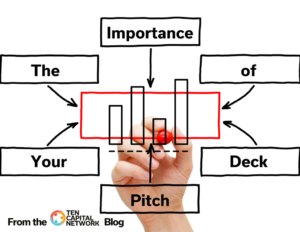
Avoiding Common Pitch Deck Mistakes
2min read Creating your pitch deck is an important part of raising funding for your startup. While you may think that you have covered all

2min read Creating your pitch deck is an important part of raising funding for your startup. While you may think that you have covered all

2 min read Congratulations: You’ve landed a meeting with a prospective investor. It’s now time to prepare for your first meeting where you’ll present your

2 min read Financial models contain numerical data about the past, present, and future of your business. This information can be used to make business

2 min read When venturing into raising funding, every startup needs to know how to write a pitch deck. The following is a listing of

2 min read Presenting Your Pitch Deck: what you need to know. A pitch deck is an essential tool to have when looking for funding

2 min read Every startup is going to need a pitch deck if they intend to raise funding. So, if you’re new to the startup

1 min read A pitch deck is a huge step toward funding for a startup. In many cases, this is the first tool of communication